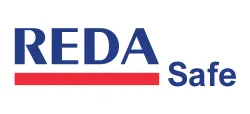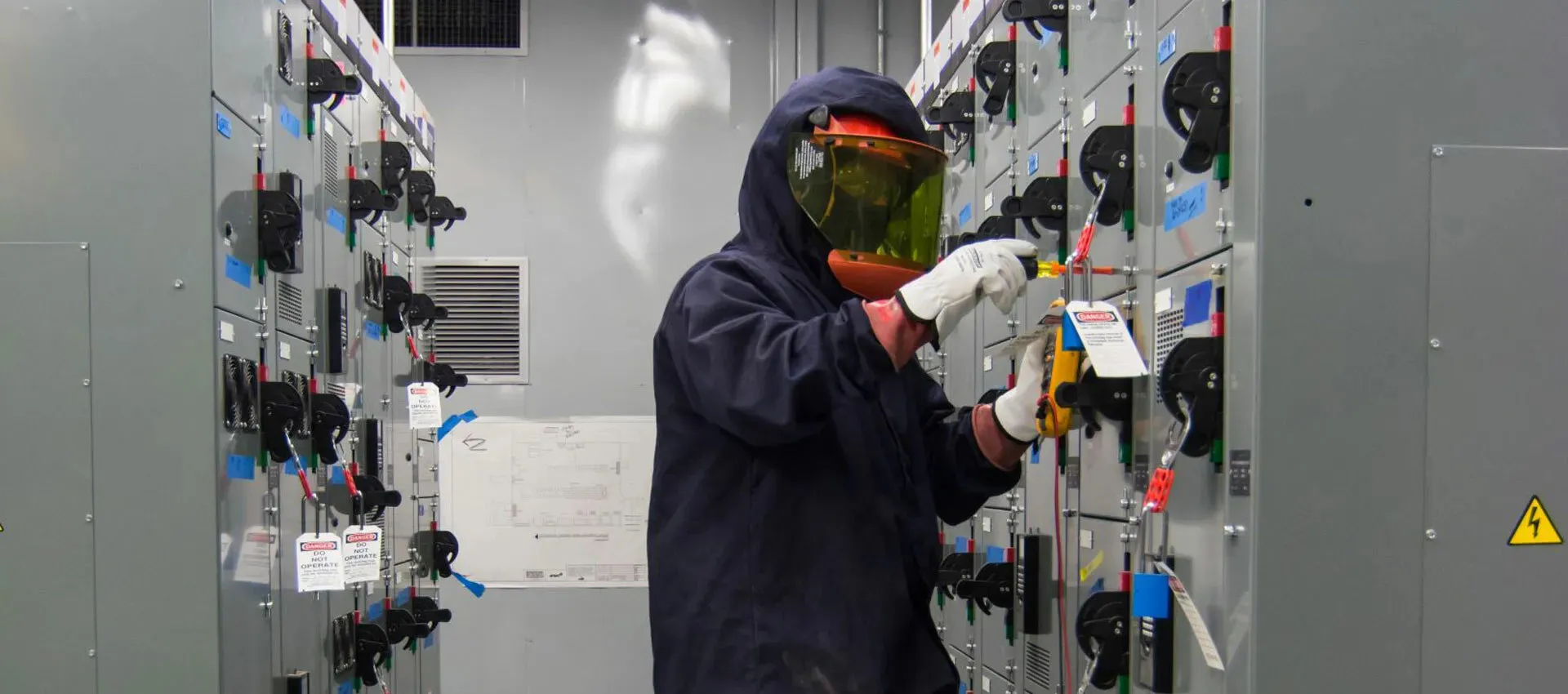Introduction
Prioritizing the safety of workers against the dangers of arc flashes is essential, especially in high-voltage settings such as substations, electrical housing units, oil and gas sites, and similar industrial environments. The risks associated with inadequate arc flash protection can lead to severe consequences, affecting both personnel and operations. Arc flashes, characterized by their intense and unforgiving nature, pose a significant threat. It is crucial to understand the severity of these electrical explosions and implement comprehensive safety measures. This not only ensures the wellbeing of employees but also maintains the integrity and efficiency of high-voltage operations. In this realm, there is no room for compromise - complete and effective protection is a necessity.
Understanding Arc Flash Hazards
What exactly is an arc flash? It's a powerful electrical discharge that occurs when a high-voltage current travels through the air or ground to a different phase. This intense event generates extreme heat, light, and electrical energy, capable of causing severe injuries, extensive damage, or even igniting fires. In industrial settings, controlled arc flashes are a byproduct of processes like welding or plasma cutting.
However, when an arc flash is uncontrolled, it can reach staggering temperatures over 35,000°F, hot enough to melt metals and cause a forceful explosion. Anyone or anything within the vicinity of this blast faces the risk of exposure to these extreme temperatures. That's why full-body protection isn’t just essential; it’s critical to ensure that the protective gear used is specifically designed for these high-risk situations.
Essentials of Arc Flash Safety Compliance
Adhering to OSHA's guidelines, it's crucial for workers in high-voltage environments to be well-versed in identifying live electrical components, maintaining safe distances, and adopting secure work practices. This training extends to the effective use of insulated tools and personal protective equipment (PPE), along with materials for insulation and shielding when working near energized equipment.
In this article, our focus is on comprehensive arc flash protection from head to toe. Before selecting your arc flash PPE, it's important to assess the level of protection required for your specific needs. This involves understanding the Arc Thermal Protective Value (ATPV) - the maximum energy level, measured in calories per square centimeter (cal/cm²), that PPE can withstand without the wearer suffering second-degree burns.
Another key factor is the Energy Break-Open Threshold (EBT), indicating the highest energy level at which a garment remains intact without tearing open. Exceeding the EBT can lead to direct skin contact with the electrical energy or cause the inner layers of the garment to catch fire.
For those uncertain about the appropriate level of protection, consulting services are available to aid in the development, implementation, and maintenance of your electrical safety program, ensuring it meets all regulatory standards.
Once the required level of protection is determined, we will guide you through selecting the necessary equipment to safeguard workers effectively, covering them from head to toe.
Selecting the Right Hard Hats for Electrical Safety
When it comes to head protection in high-voltage workplaces, choosing the appropriate class of hard hats is essential. The American National Standards Institute (ANSI) categorizes hard hats into three classes based on their level of electrical protection:
- Class G (General) Hard Hats: These are tested to withstand up to 2,200 volts, offering a basic level of protection against electrical hazards.
- Class E (Electrical) Hard Hats: Designed for higher electrical safety, these hard hats are tested up to 20,000 volts, providing enhanced protection in environments with higher voltage exposure.
- Class C (Conductive) Hard Hats: It's important to note that Class C hard hats are not intended for electrical hazard environments as they are conductive and do not offer electrical protection.
To ensure the safety of your workforce, it's critical to assess the types of voltages workers might encounter and select a hard hat class that aligns with those specific needs. This proactive approach is key in maintaining a safe and compliant high-voltage work environment.
Choosing the Right Arc Flash Hoods for Maximum Protection
Arc flash hoods, an essential component of full-body safety in high-voltage workplaces, are crafted from materials that resist flames, ensuring comprehensive protection for the head and neck. For complete compliance with NFPA 70E standards, these hoods need to be used alongside a face shield. There's a variety to choose from, including lift-front and pull-over styles, each designed to offer maximum safety and adaptability in environments where arc flash hazards are a concern. Selecting the right arc flash hood is a critical step in safeguarding employees against potential electrical dangers.
Arc Flash Face Shields: Safeguarding Against Electrical Hazards
When it comes to arc flash protection, face shields play a pivotal role. These shields are meticulously designed to provide defense against arc flashes, offering protection not only from the intense heat and light but also from harmful UV radiation. To ensure compliance with safety standards, it's imperative that these face shields meet the rigorous criteria set by ANSI Z87.1 and ASTM specifications. When choosing face shields, prioritize safety and adherence to standards to guarantee the highest level of protection in high voltage workplaces.
Rubber Insulating Gloves: Essential Electrical Protection
Rubber insulating gloves are a fundamental part of safeguarding workers from electrical hazards. To ensure their reliability, these gloves should undergo testing at least every six months. Some glove styles even incorporate RFID technology, guaranteeing traceability and confirming that your employees are equipped with the appropriate personal protective equipment (PPE) to carry out their tasks safely and securely. These gloves are a crucial element in the defense against electrical dangers in high voltage workplaces.
Arc Flash Coveralls: Meeting Safety Standards for Electrical Protection
When it comes to arc flash protection, arc flash coveralls are a must-have. These coveralls are crafted from materials that resist arc flashes, ensuring maximum safety for workers in high voltage workplaces. To guarantee their effectiveness, it's crucial that these coveralls adhere to the stringent standards set by NFPA 70E and ASTM F1506. Ensuring that your coveralls meet these standards is a vital step in providing comprehensive protection against electrical hazards.
Hair and Beard Nets: A Necessity in Certain Industries
In specific industries, the use of hair and beard nets becomes mandatory for safety reasons. These nets serve a dual purpose, not only maintaining hygiene but also providing substantial ATPV value protection in some cases. When considering the safety of workers in high voltage workplaces, these nets can be a valuable addition to the overall safety measures, ensuring both cleanliness and added protection.
Arc Flash Protection Suits: Enhanced Safety Gear for High Voltage Environments
Arc flash protection suits come in various forms, available either as individual garments or as complete sets that include a hood, coat, and overalls. These suits find frequent use in situations demanding higher levels of protection against arc flashes.
When selecting an arc flash protection suit, it's crucial to consider the product's heat attenuation factor. This factor indicates how effectively the garment can resist heat during an arc flash incident. Ideally, the suit should maintain its flame-resistant capability throughout its lifespan, ensuring consistent protection for workers in high voltage workplaces.
Selecting the Right Footwear for Electrical Safety
When it comes to safety in high voltage workplaces, choosing the right footwear is critical. It's essential to opt for dielectric footwear that matches the voltage levels that workers might encounter. This footwear should also meet the stringent ASTM F1117 standard specifications designed explicitly for dielectric footwear.
The primary purpose of dielectric footwear is to provide additional isolation and insulation, particularly in the event of accidental contact with energized conductors or circuits. It acts as a protective barrier, minimizing the risk of electrical shock.
Dielectric footwear comes in various styles to suit different workplace needs. These include boots that fit over existing footwear, offering protection for the lower leg, as well as rubber boots and galoshes. Making the right choice in footwear ensures that workers are well-protected against electrical hazards in their high voltage work environments.
Arc-Rated Fall Protection: Safeguarding Workers at Heights from Arc Hazards
Arc-rated shock absorbing lanyards are specifically engineered to provide protection for workers who are exposed to arc flash and arc blast risks while working at elevated heights. Ensuring their safety, these lanyards should adhere to stringent standards set by ANSI, OSHA, and ASTM F887-05 Arc Flash Standards. These standards delineate the precise specifications for personal climbing equipment intended for workers operating in environments with arc flash hazards.
In addition to arc-rated shock absorbing lanyards, workers should be equipped with arc-rated harnesses and arc-rated fall limiters. These comprehensive measures are crucial in safeguarding individuals working at heights, offering maximum protection against arc hazards in high voltage workplaces.
Enhanced Safety Measures
In addition to the previously mentioned safety gear, there is a range of other tools and equipment available to further enhance protection for your workers against arc flash incidents. These include:
- Hot sticks and attachments
- Grounding equipment
- Insulating covers, blankets, and line housings
- Guards and covers
- Insulated jumpers
- Voltage detectors
To ensure comprehensive safety in high voltage workplaces, it's essential to conduct a thorough arc flash hazard risk assessment. This assessment serves multiple purposes, including:
- Determining the potential for arc flashes
- Identifying opportunities to reduce or eliminate hazards
- Establishing minimum safe working distances
- Identifying the appropriate personal protective equipment (PPE)
- Evaluating the training requirements for workers
By conducting this assessment, you can tailor your safety measures to the specific risks and needs of your workplace, ensuring maximum protection for your employees.
Conclusion
In the quest for comprehensive protection against arc flash incidents, worker safety in high voltage workplaces stands as the top priority. The array of safety equipment, from head to toe, ensures every aspect of their well-being is secure.
From robust hard hats to arc flash protection suits and even footwear with dielectric properties, each piece of gear plays a vital role. Equally important are arc-rated fall protection measures, such as lanyards, harnesses, and fall limiters, for those working at heights.
Furthermore, a thorough arc flash hazard risk assessment serves as the cornerstone of a safer workplace. It identifies potential risks, minimizes them, establishes safe working practices, selects suitable personal protective equipment, and outlines necessary worker training. In summary, total defense against arc flash incidents is not just a goal—it's a commitment to creating a high voltage workplace where safety reigns supreme, enabling every employee to carry out their duties with confidence and security.

